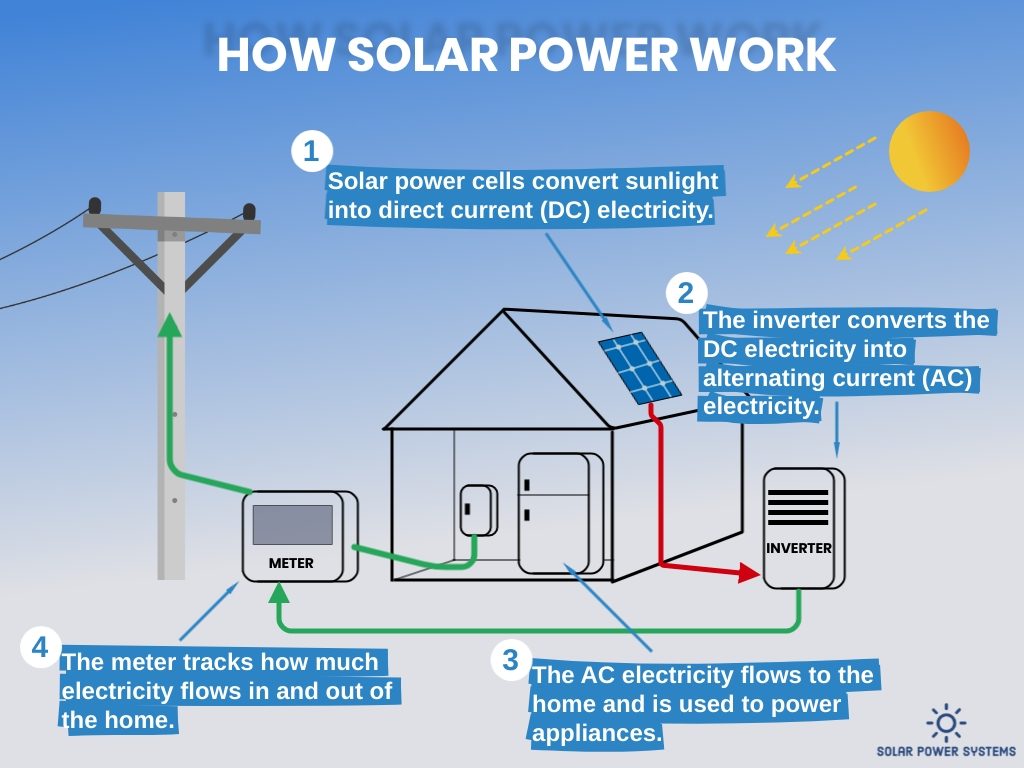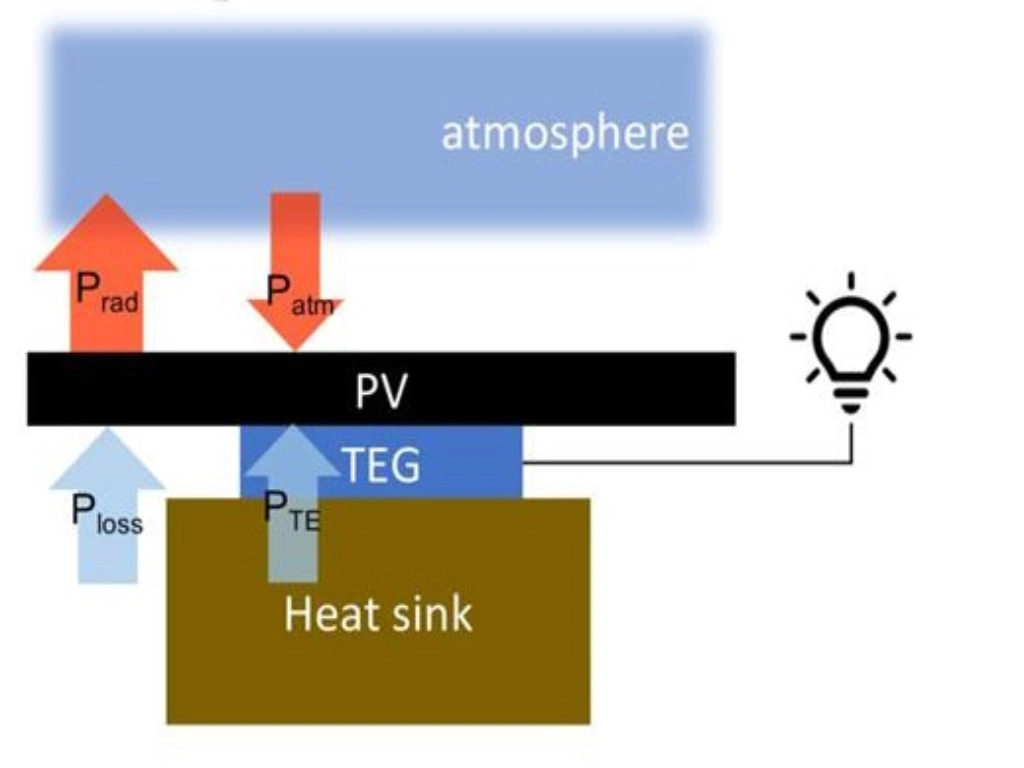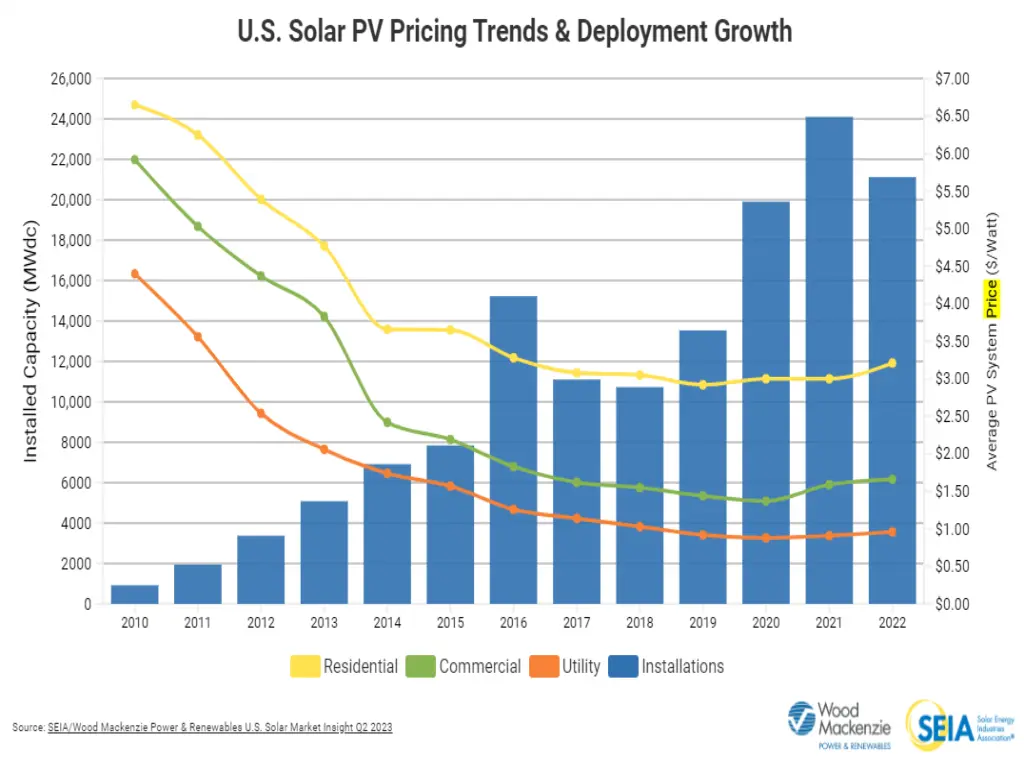Solar energy is one of the key resources in the modern world that requires a transition to sustainable energy. While traditional solar panels have made a great contribution to generating eco-friendly power, their functionality has been constrained by reliance solely on sunlight.
However, a breakthrough by Stanford University engineers has led to the development of groundbreaking solar panels capable of producing electricity even after the sun sets.
Curious? We invite you to delve into the fascinating world of modern developments in solar panels for electricity, starting from the very beginning.
The Purpose of Solar Power Generation
Solar energy has its roots in the mid-18th century when the photovoltaic effect — the process of converting solar energy into electricity — was discovered. Almost 200 years later, solar panels have become one of the primary sources of renewable energy, powering homes, businesses, and entire cities.
According to Research and Markets, the global solar energy market increased from $101.87 billion in 2022 to $126.82 billion in 2023, considering a compound annual growth rate (CAGR) of 24.5%.
Geopolitical reasons, leading to economic sanctions on many countries, rising raw material prices, and supply chain disruptions, triggered inflation in goods and services on global markets. Nevertheless, with an expected annual growth rate of 29.3%, the solar energy market is anticipated to reach $354.99 billion in 2027.
Solar Power Electricity Generation: Understanding How It Works
How do solar panels work?
Solar batteries capture rays that reach the photovoltaic layer. Sunlight releases electrons, ensuring their constant movement, leading to the natural generation of voltage. As a result, one photovoltaic layer becomes positively charged while the other becomes negatively charged.

Solar energy is a renewable resource with a logical explanation. Sunlight requires no extraction or transportation; it is silent and weightless. Moreover, it is entirely harmless, and its utilization has no impact on the planet’s thermal balance, generating no direct thermal or chemical waste.

What Distinguishes the Stanford Solar Panel?
The Stanford solar panel marks a new era in solar technology. Engineers at the university redesigned the structure and materials of solar elements, allowing the panels to generate electricity continuously.
Engineering Principles
A large part of the world lacks power grids. Standard PV elements can help by being self-sustaining power sources. These solar panels generate electricity only during the day, making nighttime production impossible.
In rural areas, batteries are needed for night power, making systems more complex. Finding ways to use existing PV elements at night could simplify solar energy limitations and might remove the need for extra batteries in energy systems.
Researchers at Stanford, led by Sid Assaworrarit, modified previously released solar panels. They developed a device that facilitates electricity generation using the oscillations in ambient air temperature. Here are several facts about the development:
- The Stanford solar panel includes a thermoelectric generator, harnessing energy from the temperature difference between the solar panel and the surrounding air. Typically, this temperature difference is small.
- During nighttime hours and clear skies, electricity generation reaches 50 mW/m^2 with an open-circuit voltage of 100 mV, according to the engineer and colleagues’ research article.
- During daylight hours, the thermoelectric generator can provide additional power without considering the electricity generated directly by photovoltaic elements.
All this allows the solar system to serve as a continuously renewable energy source, operating both during the day and at night in independent locations.
How Do Solar Panels Work at Night?
Let’s examine the process of generating solar panel energy from a thermodynamic perspective. The main principle involves the conversion of thermal energy from one form to another. In other words, generating energy through heat requires its flow from a hot source directly to a cold sink.
Thus, during daylight hours, the photovoltaic element functions as a heat engine, using the Sun as a heat source. Earth’s environment, in this case, acts as a cold absorber. These processes initiate the conversion of solar radiation, which reaches the surface of the photovoltaic element, into electrical energy.
Outgoing radiation escapes into space from Earth due to its atmosphere being transparent in the infrared wavelength range. This flux is crucial to maintaining Earth’s average temperature, countering the heat from the incoming solar energy source. Moreover, it occurs both day and night, making it intriguing for electricity generation during nighttime.
Essentially, any object on Earth with sky access can release heat into space, creating what’s known as radiative cooling.

Source: AIP Publishing
Why Is Solar Power Electricity Generation an Investment in the Future?
Panels designed to generate solar energy are not casually referred to as life investments. However, purchasing and installing solar photovoltaic systems significantly differs from our familiar bank investments or investment accounts.
Solar panels can serve for 25 years or more — agreeably, a commendable lifespan for substantial savings on electricity expenses or even their complete elimination. On average, the annual savings on electricity bills from such a system can amount to $1300.
Even though solar energy-generated panels represent a substantial initial investment, the cost of installing a system has decreased by approximately 50% over the last 10 years, making it more accessible to the average U.S. resident. Furthermore, there is a 30% Federal Solar Tax Credit, significantly reducing the costs of placing panels on your home.
Let’s delve into the detailed benefits of installing solar panels for households.
Advantages of Installing Solar Panels
In addition to cost savings and installation affordability, there are several less obvious but significant benefits of photovoltaic solar systems.

Always Have Light at Home During Power Outages
Generating your electricity allows you to power your home consistently, especially during power interruptions. Notably, battery storage is worth mentioning as an addition to residential solar energy systems.
This system is called “solar energy + storage” and can supply energy to your home without dependence on weather, time of day, or even backup grid power. This is advantageous if you’re not ready to install solar panels that work at night.
Significant Increase in Home Value
Did you know that solar panel systems are considered a home upgrade akin to kitchen renovations or basement finishing? This determination comes from research conducted by the National Berkeley Laboratory.
In some cases, installing such elements as night solar panels can increase rental rates if you lease your property to others.
Functionality in Diverse Climate Conditions
While solar panels that work at night are quite clear, standard systems can generate electricity even in winter when daylight hours are shorter than in other seasons. The energy they produce is sufficient to power an average American home.
Furthermore, ongoing research and regular testing are conducted by The Solar Energy Technologies Office (SETO) to assess the resilience of solar panels to various environmental challenges.
No Need to Own a House to Harness Solar Energy
Another subtle advantage of solar panel installation is that you don’t have to own a house. If you’re renting or living in a multi-story building, joining those who benefit from solar energy is simple — just participate in Community Solar programs. These programs involve the shared use of solar panels by multiple individuals.
Such a system can be placed on one of the buildings or even outside of it, and the costs of acquisition and installation are evenly shared among all users. Of course, in the long run, installing a solar panel that works at night is more advantageous.
As you can see, various conditions are even government-supported to facilitate the transition from traditional electricity sources to alternative ones. This underscores the relevance of addressing our planet’s resource depletion and exploring potential replacements.
What Factors Should Be Considered When Installing Solar Panels?
If you have finally decided to install solar panels on your own, take into account several important conditions that can maximize the benefits of such a choice.
Location of Your Home
So, if you are ready to approach solar panel companies for installation, consider the location of your residence.
Is there plenty of sunlight in your area throughout the year? If yes, this decision will pay off much faster than in regions with less sunlight. Of course, if you are considering solar panels work at night, you don’t need to worry about the amount of sunlight in your region.
Structural Features of the Roof
As solar panels are predominantly placed on house roofs, assess the characteristics of your roof. This will help overcome potential obstacles and install the batteries smoothly.
For instance, if there are sprawling, branchy trees near your house casting shadows on the roof, the idea of installing solar panels on it may not meet your expectations. Steep roof slopes also complicate the installation, so the ideal scenario is roofs with ample space and minimal skylights or chimneys.
Amount of Electricity You Consume
Whether you plan to install solar panels working at night or their daytime counterparts, determine your monthly electricity consumption norm. This will aid in accurately assessing the feasibility of installing solar panels. The same applies to the tariffs you pay. If they are high, transitioning to solar energy consumption can lead to significant savings.
Choosing a Trustworthy Provider
Before installing solar panels, it’s crucial to decide on a service provider. It’s not only necessary to explore the offered options but also to analyze the warranty package provided. This way, you can choose the most suitable option for your household.
Approval from Local Authorities
You need approval from the city municipality, as many cities and homeowners’ associations have specific guidelines for solar panel installations. Service providers can assist in obtaining such approval, but the ultimate responsibility lies entirely with the customer.
Storage of Excess Energy
Every utility enterprise has specific accounting and resale systems for resale of excess electrical energy back to the grid. It often happens that a household consumes less solar energy than the panels generate. In such cases, the energy system can use the surplus megawatts, providing the homeowner with credits for the excess.
Another option is to store excess energy in batteries for later use. This is particularly convenient during insufficient sunlight or energy grid overload.
Understanding all the nuances will help you make an informed decision in favor of modern technologies, bringing significant cost savings in the future.
The Price of Solar Panels: What Factors Affect It?
Interestingly, the price of solar panels has significantly decreased over the past decade. This is because the industry has reached maturity and expanded global-scale production.

Source: SEIA
Typically, the final cost of installing a photovoltaic system depends on the type of solar panels chosen and the installation company. Generally, it can be confidently stated that the equipment constitutes about half of the total price. This includes panels, inverters, batteries, racks, and other installation equipment.
The remaining expenses cover taxes, administrative fees, installation permits, and labor.

Let’s take a closer look at what influences the price of solar panels.
Type of Panels
This is one of the most crucial factors influencing the cost. Panels vary in efficiency and manufacturing technology. For instance, monocrystalline models will be more expensive than polycrystalline or thin-film ones due to their superior performance.
Efficiency
It’s logical that the higher the efficiency of a solar panel, the more sunlight it can convert into electricity. While such panels may be expensive initially, over their entire lifespan, they can generate more energy, providing better long-term value.
Manufacturer
The quality of materials used and the reputation of the brand manufacturing the solar panels can add several hundred dollars to the final payment. Well-established companies that have earned consumer trust typically set higher service prices.
Size of the Installed System
Solar energy systems are measured in kilowatts or megawatts, directly impacting their cost. The more extensive the system, the more expensive it will be for the homeowner.
Location and Sunlight Access
The amount of sunlight a location receives is directly related to the energy output of solar panels. In sunnier areas, smaller and less costly solar installations may suffice.
Incentives
As mentioned earlier, tax credits, incentives, and government stimulus programs can significantly reduce the installation cost of solar panel systems. Different regions have their systems of financial discounts.
Warranties and Lifespan
Solar panels typically come with warranties, and the better the quality of the model, the longer its lifespan. The long-term performance of the panel is also factored into its cost.
Considering these factors will help you navigate the cost of transitioning to such an alternative energy source more effectively.
Maximize Solar Energy Generation Even at Night
Science doesn’t stand still, and now we have the opportunity to enjoy its benefits and continually advance our knowledge in various fields. Engineers from Stanford Electric have taken on this challenge and found an answer to the question, “How do solar panels work at night?” by upgrading existing models.
Equipping solar installations with a thermoelectric generator, Stanford scientists have made a significant leap, overcoming the natural limitations of daylight.
So, the next time you find yourself enchanted gazing at the starry sky, remember that the bright minds of today are taming the forces of darkness to create a new, bright future.


